 Research
ResearchHome | Bio | CV | Courses | Research | Other
 Research
ResearchFor any speculation which does not at first glance look crazy,
there is no hope. – Freeman Dyson
[Thought-Bite] [So far] [Now] [Plans] [Publications]
(click on the plaques for more info) |
… and
a few words about
conifolds. |
If this is all gibberish to you but you don't want to give up, please visit (listed in no particular order):
Fundamental Particles & Interactions,
The Particle Adventure,
Particle Data Group,
The Net Advance of Physics: Strings
sites first,
use your internet search engine, or see if you like my own attempt at introducing the
concepts of the contemporary search for The Theory of (More
than) Everything: Through Strings to Cosmic Strings
and Why.
On a related note, you may want to read some other attempts, in book form, to explain string theory and the related quest for a theory of everything:
| John D. Barrow | Jeremy Bernstein | Stephen Hawking | Brian Greene | John Gribbin | Robert Oerter | Steven Weinberg | |
 |
 |
 |
 |
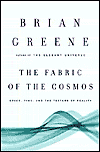 |
 |
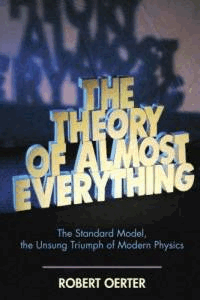 |
 |
| Theories of Everything:… | A Theory for Everything | Quest for a Theory of Everything | The Elegant Universe | The Fabric of the Cosmos | The Search for Superstrings… | The Theory of Almost Everything | Dreams of a Final Theory |
The (by now classical) technical reference on (super)string theory is the 2-volume set by Michael Green, John Schwarz, and Edward Witten: “Introduction” and “Loop Amplitudes, Anomalies and Phenomenology”, and by now there exists even an excellent (advanced) undergraduate textbook, “A First Course in String Theory” by Barton Zwiebach.

 If you prefer
a more recent and serious (and technical) reading on string theory, I recommend Joe Polchinski‘s
2-volume text on the subject. It will provide both a historical setting and a good introduction
to the contemporary ideas in this speedily developing research field. =>
If you prefer
a more recent and serious (and technical) reading on string theory, I recommend Joe Polchinski‘s
2-volume text on the subject. It will provide both a historical setting and a good introduction
to the contemporary ideas in this speedily developing research field. =>
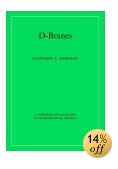 <= Subsequently
appeared Clifford Johnson's book on D-branes, which can be read either
together with Polchinski's 2-volume set or thereafter. This triptych
reveals why string theory is not just a theory of strings, but also
of other things: D-branes are higher-dimensional objects that play
a vital role in (the increasingly misnamed) string theory.
<= Subsequently
appeared Clifford Johnson's book on D-branes, which can be read either
together with Polchinski's 2-volume set or thereafter. This triptych
reveals why string theory is not just a theory of strings, but also
of other things: D-branes are higher-dimensional objects that play
a vital role in (the increasingly misnamed) string theory.
Further sources—for those not faint of heart (or brain)—are mostly found on the arXiv, but also in the collections:
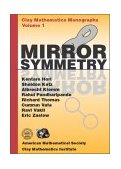
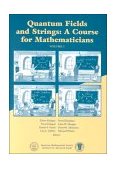 <=
A herculean collaboratorial effort by Kentaro Hori, Sheldon Katz, Albrecht Klemm, Rahul Pandaripande,
Richard Thomas, Cumrun Vafa and Eric Zaslow (as editors) contains almost 1000 pages of material
contributed from "both sides of the fence", (mathematical) physicists as well as (physical)
mathematicians.
<=
A herculean collaboratorial effort by Kentaro Hori, Sheldon Katz, Albrecht Klemm, Rahul Pandaripande,
Richard Thomas, Cumrun Vafa and Eric Zaslow (as editors) contains almost 1000 pages of material
contributed from "both sides of the fence", (mathematical) physicists as well as (physical)
mathematicians.
Structurally similar, but in many ways complementary is the 2-volume set (totaling 40% mora pages!) by Pierre Deligne, Pavel Etingof, Daniel S. Freed, Lisa C. Jeffrey, David Kazhdan, John W. Morgan, David R. Morrison, and Edward Witten (as editors). =>
“The most exciting phrase to hear in science,
the one that heralds new discoveries,
is not ‘Eureka!’ but ‘That's funny...’” – Isaac Asimov
I have been studying the vacuum; since 1983 in publication, but actually since well before that.
In so-called grand-unification models, this relates to the pattern(s) of symmetry breaking, in superstrings--to ‘compactification’. Besides the ‘purely’ mathematical physics issues in these problems, I was also interested in implications to phenomenology. So, the techniques developed in articles [E.1–E.6]† to study the pattern of symmetry breaking in grand-unified models could be applied to investigate the possibility that the symmetry of strong interactions, SU(3), is itself broken [E.9]. In general though, these group theory boosted field theory methods are applicable rather more widely and still await for new applications. Some have been successfully applied to the study of nuclear structures [N.1–N.11].
Since 1986, most of my research has focused on the study of superstring ground states, the corresponding Calabi–Yau manifolds and related field theories, notably the so-called Landau-Ginzburg orbifolds. This has brought about an unsuspected wealth different techniques and methods, borrowed, modified and developed from various branches of physics and mathematics. It transpires that the broad perspective provided by superstring theory enables relations between rather different approaches and so the use of standard results and methods of one field to obtain novel information in another.
For example, Ref. [E.42] answers certain questions about a class of highly nonlinear constrained sigma-model, both by an easy algebro-geometric calculation and also a simple particle physics argument. Also, Refs. [E.43, E.49] prove the perfect correspondence between the semiclassical results for Landau-Ginzburg orbifolds, developed by C.Vafa and others, and the so-called Koszul computations (classical geometry) for the corresponding complete intersection manifolds, developed in Refs. [E.17, E.21, E.33, E.36, E.38]. Moreover, the latter technique is also closely related to the so-called BRST treatment of constraints [E.49, 52]. As an anecdotal remark: whereas the technique of Koszul computations is 'in principle' widely known to mathematicians, it took a concatenation of felicitous events and two years of inquiry to bring about a one-year transcontinental e-collaboration [E.33] which resolved the issue in all technical detail and firmly establish the method.
It has become gradually clearer [E.43, E.49, E.50, E.51], that the semiclassical Landau-Ginzburg orbifold methods and the Koszul computations overlap to a great extent, but by far not entirely. Many of these two (and possibly all) types of models have since been shown by E.Witten [“Phases”] to be suitable limits of a more general linear sigma-model. From a different approach, the article [E.52] presents a residue-theoretic formulation of the Koszul computation, links it to the (BRST) gauge-theoretic treatment of constraints, so-called polynomial deformations, homological algebra, special geometry etc. This also relates these to the technique for calculating the Yukawa couplings and the Zamolodchikov metric as functions over the whole moduli space [E.32, E.49–E.51]. ... Over the next three decades, methods (enhanced by advances in computer technology [E.124]) have improved and the more recent efforts in this direction provide much more detailed and precise physically and phenomenologically relevant answers; see [E.122] and references therein.
My book Calabi-Yau Manifolds-A Bestiary for Physicists (2nd, 2024 ed.) was meant as a comprehensive and hopefully comprehensible introduction and reference to the rapidly developing study of superstring ground states. It covers the portion of this field which is likely to have settled in its definite form, notably constructions of such manifolds, their (co)homological analysis and the general facts and ideas about the relation to field theories and superstring ground states.
†All alpha-numerical references cite items from my publication list.
 Present...
Present... Some of the topics of my current research are:
Certain to flow from the efforts of the past, my future research plans include the study of:
©2025, Tristan Hübsch